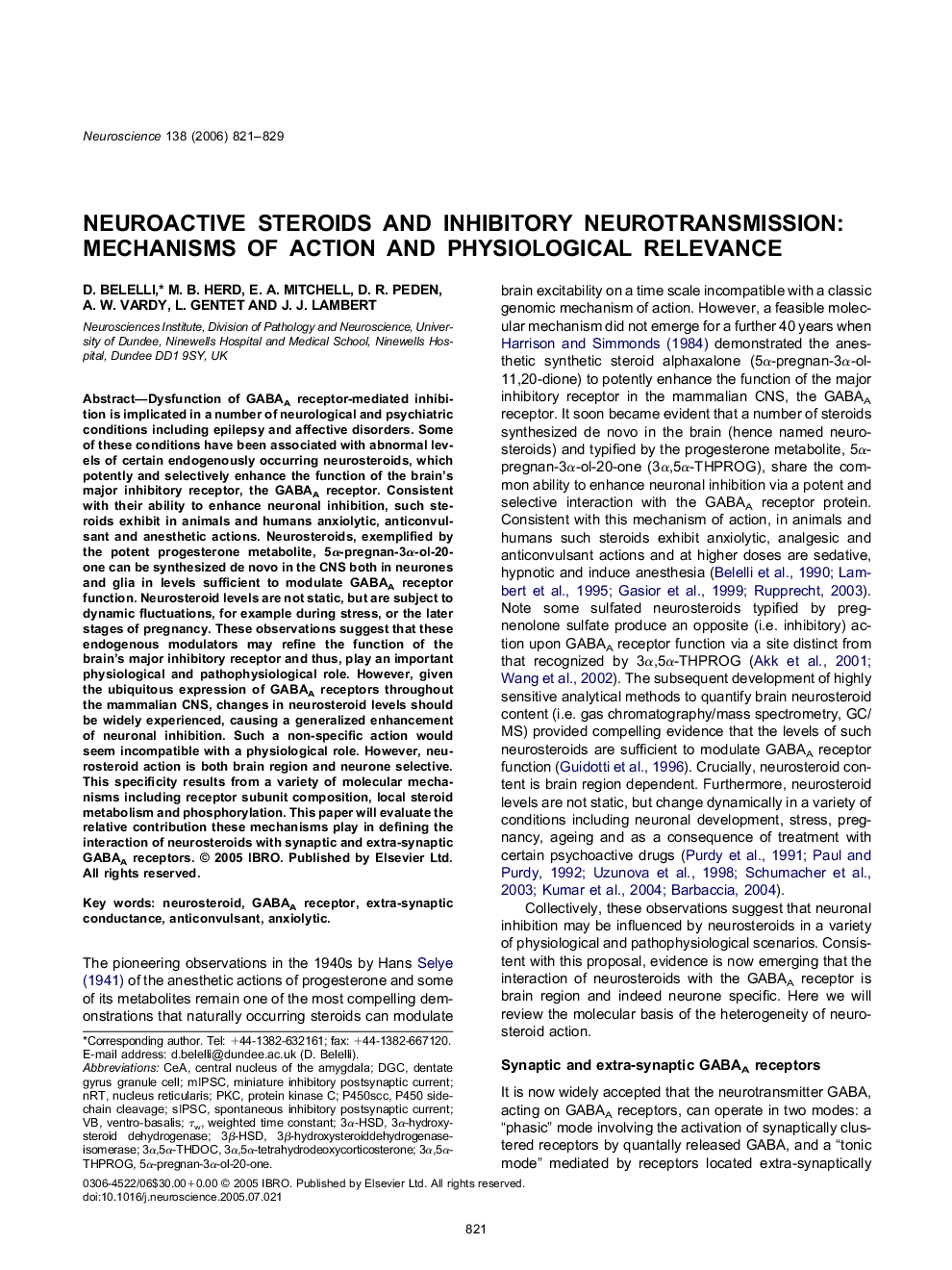| Article ID | Journal | Published Year | Pages | File Type |
|---|---|---|---|---|
| 4342048 | Neuroscience | 2006 | 9 Pages |
Dysfunction of GABAA receptor-mediated inhibition is implicated in a number of neurological and psychiatric conditions including epilepsy and affective disorders. Some of these conditions have been associated with abnormal levels of certain endogenously occurring neurosteroids, which potently and selectively enhance the function of the brain’s major inhibitory receptor, the GABAA receptor. Consistent with their ability to enhance neuronal inhibition, such steroids exhibit in animals and humans anxiolytic, anticonvulsant and anesthetic actions. Neurosteroids, exemplified by the potent progesterone metabolite, 5α-pregnan-3α-ol-20-one can be synthesized de novo in the CNS both in neurones and glia in levels sufficient to modulate GABAA receptor function. Neurosteroid levels are not static, but are subject to dynamic fluctuations, for example during stress, or the later stages of pregnancy. These observations suggest that these endogenous modulators may refine the function of the brain’s major inhibitory receptor and thus, play an important physiological and pathophysiological role. However, given the ubiquitous expression of GABAA receptors throughout the mammalian CNS, changes in neurosteroid levels should be widely experienced, causing a generalized enhancement of neuronal inhibition. Such a non-specific action would seem incompatible with a physiological role. However, neurosteroid action is both brain region and neurone selective. This specificity results from a variety of molecular mechanisms including receptor subunit composition, local steroid metabolism and phosphorylation. This paper will evaluate the relative contribution these mechanisms play in defining the interaction of neurosteroids with synaptic and extra-synaptic GABAA receptors.
